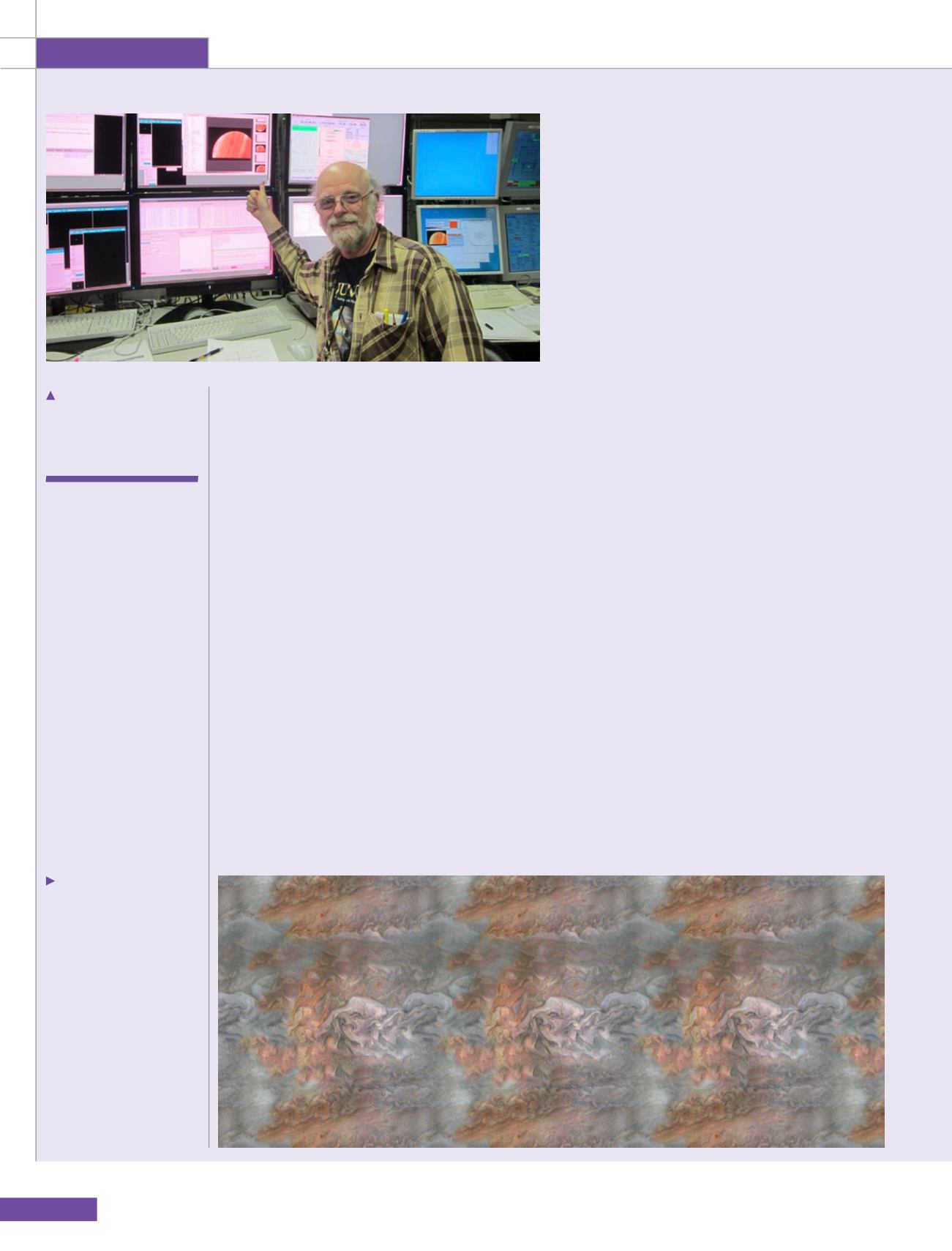
ROOM
104
Space Lounge
Citizen scientist Eric
Jorgensen created this
Jovian artwork with a
JunoCam image taken
when the spacecraft was
at an altitude of 11,100
miles (17,800 km) above
Jupiter’s cloudtops on 11
December 2016.
We need to
enthusiastically
acknowledge
the JunoCam
camera that
is providing
us with these
other-worldly,
gorgeous
views of the
surface of the
planet
artist members of the International Association
of Astronomical Artists (IAAA), who have
created some of the most beautiful art of our
universe - and while some of the art might be
fantastical, they all appreciate the importance
of incorporating science in their art. A couple of
the Jupiter paintings that have stood out to me
recently are by the amazingly talented artist Lucy
West (
.
While the primary mission of Juno is the science
that will allow us to better understand the interior
structure of Jupiter that we’ve never seen before,
we need to enthusiastically acknowledge the
JunoCam camera that is providing us with these
other-worldly, gorgeous views of the surface of
the planet. We should be thankful that as human
beings we know that what we can see with our
eyes and feel with our hearts will always help us
better understand with our brains.
I asked JPL senior research scientist Glenn
Orton if he could only share one thing about
JunoCam what would it be? His response very
simply was that “it is everybody’s camera”. While
this is a simple answer, there is of course a whole
lot more behind it.
Glenn told me that JunoCam was purposefully
designed to allow the public to actively participate
in the mission. As part of the JunoCam community,
anyone can help decide what points of interest the
JunoCam will photograph, engage in a discussion about
these points of interest, upload your own telescopic
images and data of Jupiter to help plan the mission.
Especially exciting to me and many others is
that you can have access to all of the imagery
collected and process these images in your own
creative way. JunoCam allows you to help plan
and process the imagery, and the JunoCam team
is relying on your help to carry out the scientific
mission and operation of the camera.
Citizen members of the JunoCam team have
participated in some pretty amazing ways -
beautifully blending the artistic with the scientific.
Some of the most stunning images we are seeing
from the Juno mission are being processed by
the citizen scientists - including the inspirational
south pole image for this article.
The raw images from the JunoCam are being
colour enhanced and processed to showcase some
of the more unusual features of Jupiter’s surface;
there has been collaborative scientific analysis of
what’s being seen and there has even been purely
artistic processing of the images to generate art
that’s just creative and inspired by the natural
beauty that is Jupiter - some of its beauty that has
never been seen before.
Exploration missions like Juno are helping us
become better acquainted with the planets in our
solar system. As human beings though, what we
learn about Jupiter and the other planets we share
our solar system with ultimately comes back to a
better understanding of our own place in it and
how we all fit together.
We send our spacecraft ahead, travelling for
many years to these distant places so we can see
NASA/JPL/Caltech
JPL Scientist Glenn
Orton in mission control.
NASA/JPL-Caltech/SwRI/MSSS/Eric Jorgensen


